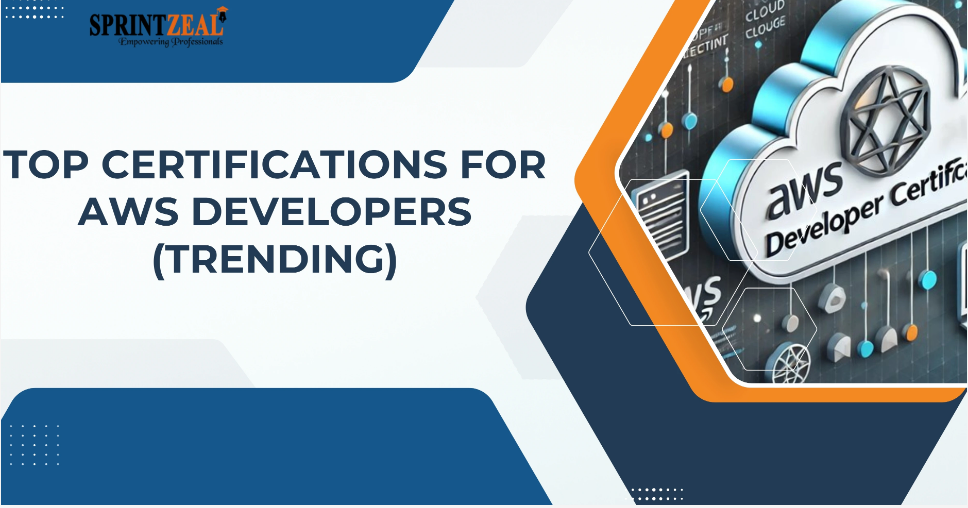A few years ago, I sat at my desk—burnt out, stuck in a job that felt like a dead end, and unsure how to break into the booming tech industry. I’d heard people talk about the “cloud” like it was some mystical land only engineers could access. AWS? It sounded impressive… but also intimidating. Could someone like me—zero coding experience, no computer science degree—actually leap?
If you’re reading this, you’re probably in that same boat—curious about AWS, maybe a bit overwhelmed, but eager to pivot into a future-proof, high-growth field. The good news? AWS training is more accessible than you think, and it can seriously accelerate your cloud career. Let’s walk through how to get started—step by step.
1. Why AWS Certification Training is a Game-Changer
Amazon Web Services (AWS) dominates the cloud computing market, powering everything from Netflix to NASA. Whether you’re looking to become a cloud architect, DevOps engineer, or even a solutions consultant, AWS certifications can open doors you didn’t even know existed.
But it’s not just about passing an exam. Enrolling in AWS certification training gives you hands-on skills, real-world scenarios, and the confidence to speak the language of cloud tech—whether you’re switching careers or leveling up in your current role.
Real talk: Recruiters do search for AWS-certified professionals. Having that badge on your resume? It’s like a golden ticket into the cloud job market.
2. Choosing the Right AWS Certification Path for You
AWS offers several certifications across different levels:
-
Foundational (e.g., AWS Certified Cloud Practitioner)
-
Associate (e.g., Solutions Architect, Developer, SysOps Admin)
-
Professional (e.g., Solutions Architect Professional, DevOps Professional)
-
Specialty (e.g., Security, Machine Learning, Advanced Networking)
If you’re new to tech or cloud, start with the AWS Cloud Practitioner. It’s designed for beginners and lays the groundwork without diving too deep into technical jargon. I started here myself, and it built my confidence before moving on to more advanced certifications.
If you’re already working in IT or development, you might want to go straight into an Associate-level cert like the AWS Solutions Architect.
3. How to Enroll in AWS Certification Training (Without Getting Overwhelmed)
There are a lot of training options out there. Some are goldmines, others just regurgitate AWS whitepapers.
When I was researching options, I found that Sprintzeal offered one of the most beginner-friendly and well-structured AWS certification training programs. What stood out? Live instructor-led classes, flexibility for working professionals, and real-time support from trainers who’ve actually worked in cloud roles—not just read about them.
Here’s a step-by-step breakdown to enroll:
-
Choose Your Certification – Based on your experience and goals (see above).
-
Pick a Trusted Training Provider – Like Sprintzeal, which offers flexible scheduling and updated course content aligned with AWS’s latest exam guidelines.
-
Sign Up & Schedule Your Sessions – Most programs offer both weekday and weekend options.
-
Get Access to Resources – Look for hands-on labs, practice exams, downloadable materials, and mentoring sessions.
-
Create a Study Plan – Aim for 1–2 hours per day if you’re working full-time.
The best part? With the right training, you don’t have to figure it out alone. You’ll have a roadmap, expert guidance, and a community of learners navigating the same path.
4. What to Expect from Your AWS Training Journey
Don’t expect to just watch videos and magically absorb everything. Good AWS training will challenge you—in a good way. You’ll start understanding core services like EC2, S3, and VPCs. You’ll launch your first cloud instances. And suddenly, terms that once sounded like a foreign language start to make sense.
In my case, I built a basic website and hosted it on AWS during training. Seeing it live gave me that aha moment: “I can actually do this.”
Expect some imposter syndrome in the beginning (totally normal), but also expect massive growth if you stay consistent.
5. Landing a Job After AWS Certification
Here’s the truth: Getting certified is the start, not the end. But it gives you a credible foundation to show employers you’re serious about cloud.
After I completed my first certification, I updated my LinkedIn profile, added “AWS Certified Cloud Practitioner,” and started applying to roles I once felt unqualified for. Within two months, I landed a junior cloud support role—and my tech career officially began.
Here’s how to maximize your post-certification momentum:
-
Build a portfolio (even if it’s just simple projects on GitHub)
-
Network with other AWS learners on Reddit, Discord, or LinkedIn
-
Keep learning – AWS changes fast, so stay current
Conclusion: Your Cloud Career Starts with One Step
Enrolling in AWS certification training might feel like a big leap—but it’s one of the smartest moves you can make in today’s tech-driven world. Whether you’re a career switcher, an IT pro looking to upskill, or someone just curious about the cloud, you don’t need to have it all figured out.
What you do need is a starting point—and this is it.
So take that step. Explore training options like Sprintzeal. Pick your certification path. Enroll. Study. Grow. And watch the doors open.
The cloud isn’t just for the tech elite anymore. It’s for people like you—and the journey starts now.


